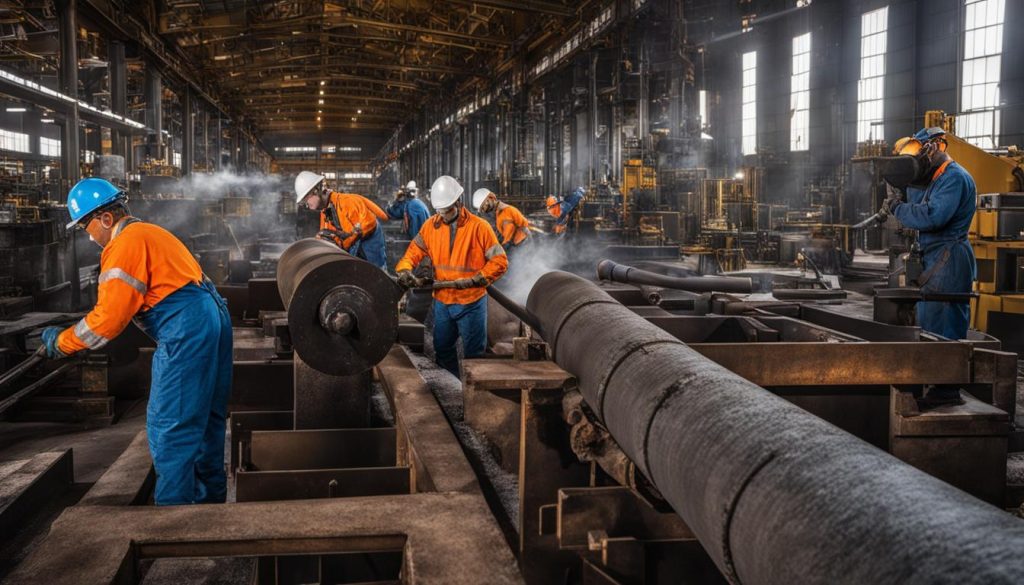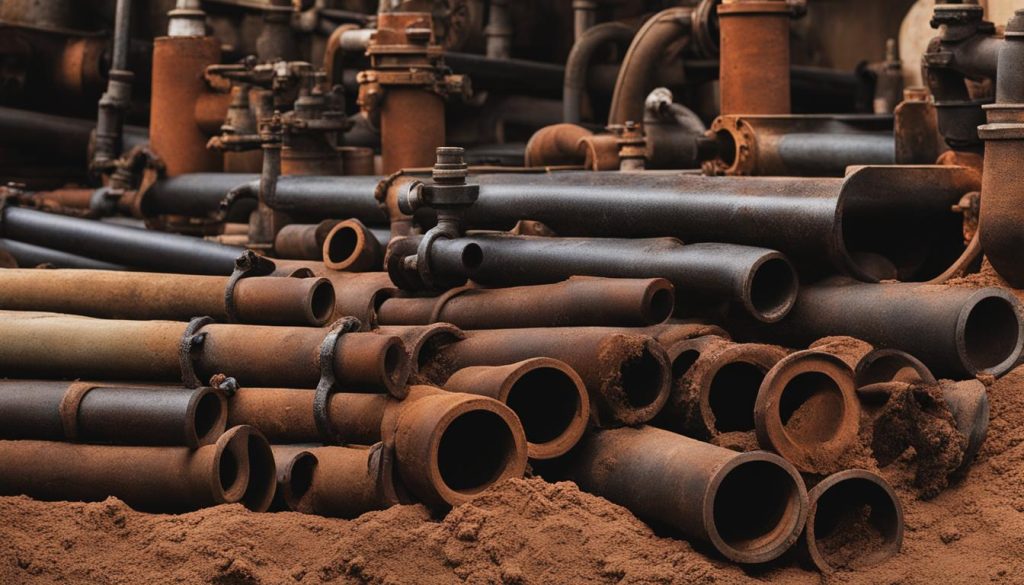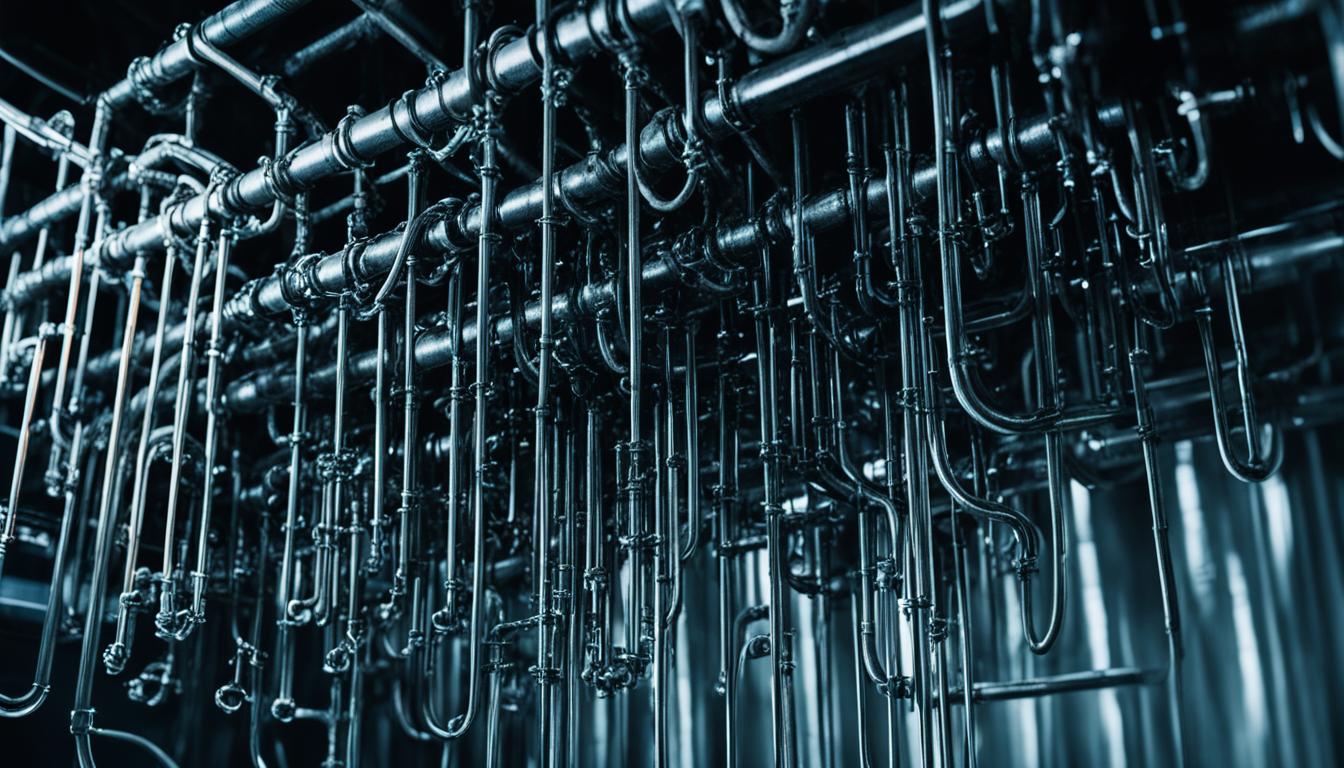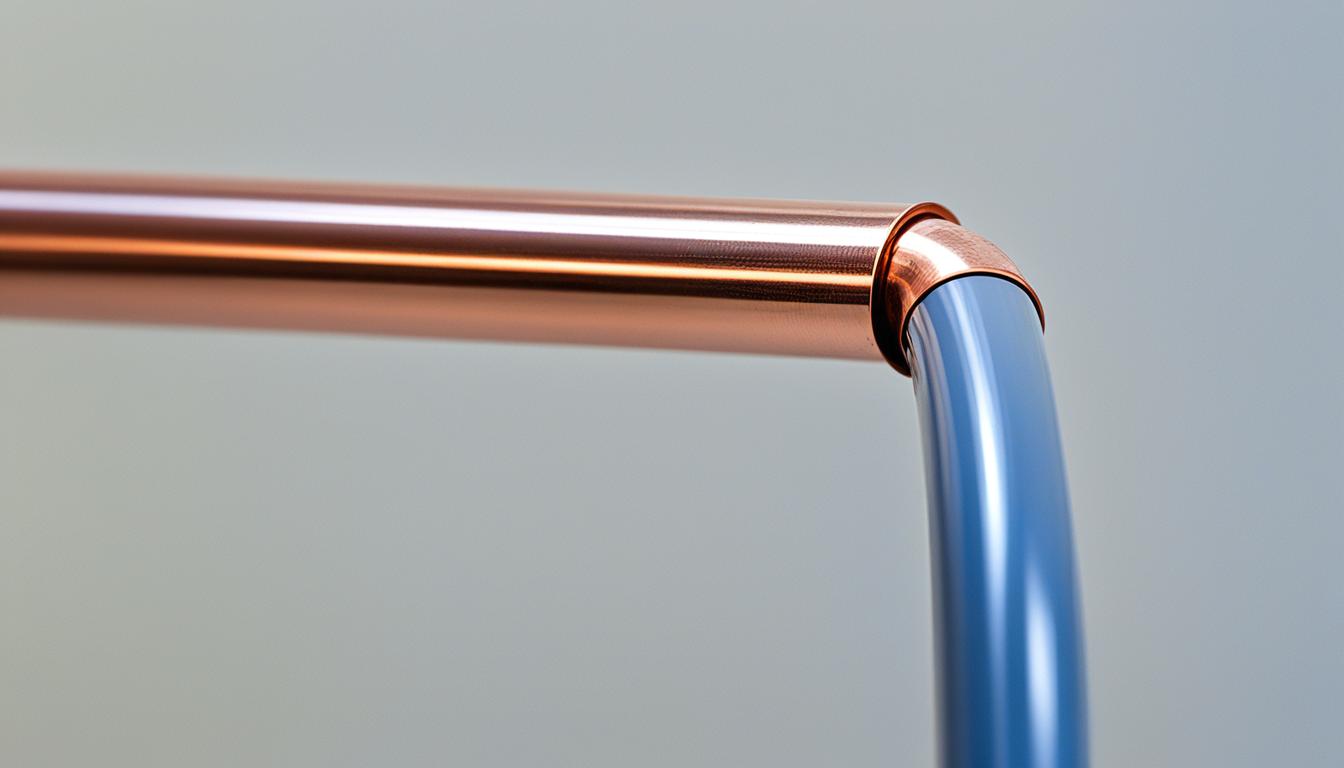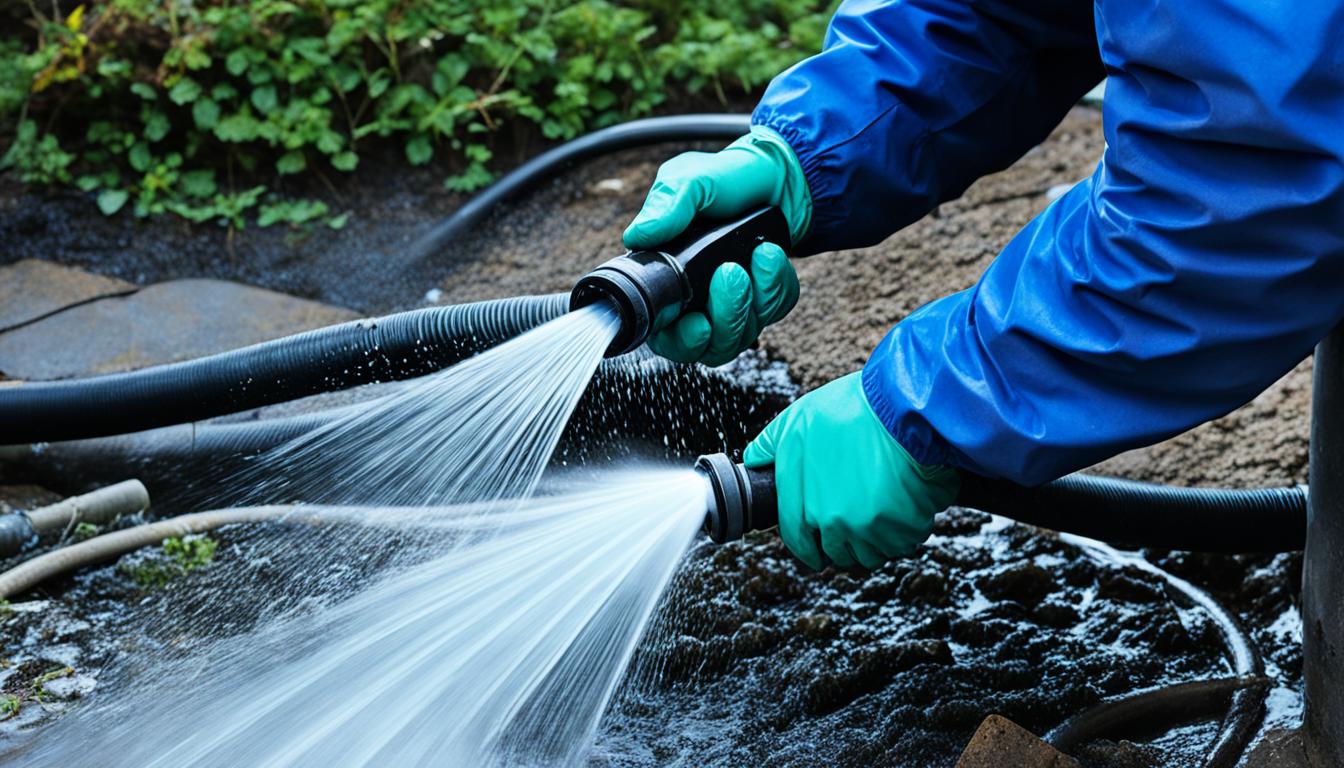End of Cast Iron Pipes Era: A Timeline
Did you know that cast iron pipes were widely used for water, gas, and sewage transmission for over three centuries?
From the 17th to the 20th century, cast iron pipes played a crucial role in delivering essential resources to communities and industries. However, with the advent of new technologies and materials, their era gradually came to an end.
Key Takeaways:
- Cast iron pipes were extensively used for water, gas, and sewage transmission for over three centuries.
- Their use was gradually replaced by ductile iron pipes during the 1970s and 1980s.
- Despite their decline, many public utilities and industries still have functional cast iron pipes in service today.
- Cast iron pipes were manufactured using different casting methods and had various joint types.
- They were susceptible to internal and external corrosion, necessitating coatings and linings to combat degradation.
The Use of Cast Iron Pipes
Cast iron pipes have a rich history dating back to the 17th century when they were first utilized in the gardens of the Chateau de Versailles. These pipes were comprised of individually cast sections that were joined together using various joint mechanisms. Over time, however, cast iron pipes were replaced by ductile iron pipes, which offered a tougher and more elastic material by incorporating magnesium.
Despite the evolution and widespread adoption of ductile iron pipes, cast iron pipes are still present in many public utilities and industries today. The durable nature of cast iron made it an attractive choice for various applications, from water distribution systems to sewage networks. The distribution of cast iron pipes extended across several sectors, including residential, commercial, and industrial environments. Their widespread use can be attributed to their strength, stability, and longevity, which allowed for reliable and efficient transport of fluids and waste.
One notable characteristic of cast iron pipes was their ability to adapt to different topographies and environments. They could be crafted to fit specific requirements, whether it be navigating under city streets or crossing hidden waterways. The adaptability of cast iron pipes further contributed to their widespread usage, as they could be tailored to suit a wide range of infrastructure needs.
As advancements in material science were made, the use of cast iron pipes gradually declined, giving way to more modern alternatives like ductile iron pipes and other materials such as PVC. However, the legacy of cast iron pipes can still be seen in the structures and systems that they serviced for centuries.
| Advantages of Cast Iron Pipes | Disadvantages of Cast Iron Pipes |
|---|---|
| 1. High resistance to external loads | 1. Susceptible to corrosion |
| 2. Long lifespan | 2. Prone to cracking under extreme temperature changes |
| 3. Excellent sound insulation properties | 3. Limited flexibility |
| 4. Fire resistance | 4. Relatively heavy |
| 5. Environmentally friendly and recyclable | 5. More costly compared to some modern alternatives |
Manufacturing and Joints of Cast Iron Pipes
Cast iron pipes, commonly used for water, gas, and sewage transmission, were manufactured through various casting methods such as horizontal, vertical, or centrifugal casting.
In the manufacturing process, either metal molds or sand molds were utilized to shape the cast iron pipes, ensuring uniformity and strength.
One of the notable features of cast iron pipes was the presence of multiple joint types, allowing for flexibility and adjustability during installation:
- Bell and spigot joints: These joints comprised a bell-shaped end on one pipe and a spigot (male) end on the other, ensuring a secure and watertight connection. This joint type is commonly used for cast iron pipes.
- Mechanical joints: These joints involved using rubber gaskets and mechanical clamps to connect the pipes, creating a reliable and flexible connection.
- Ball-and-socket joints: These joints allowed for a 360-degree rotation between the pipes, accommodating angular deflection during installation or movement of the surrounding soil.
Joints in cast iron pipes played a crucial role in ensuring the durability and efficiency of the overall pipeline system.
Challenges and Corrosion of Cast Iron Pipes
Cast iron pipes are susceptible to both internal and external corrosion, which can impact their functionality and durability over time. Understanding these challenges is crucial in ensuring the long-term reliability of cast iron pipe systems.
Internal Corrosion: Tuberculation and Bacterial Growth
Internal corrosion occurs when the bare iron surface of cast iron pipes is exposed to aggressive water conditions. Over time, this can lead to the formation of tubercles, which are mineral deposits that accumulate on the internal pipe walls. Tuberculation restricts water flow, reduces pipe capacity, and increases pressure loss. It also provides a favorable environment for bacterial growth, potentially compromising water quality.
To address internal corrosion, cast iron pipes were often coated internally with cement mortars or linings. These protective coatings act as a barrier between the water and the iron surface, reducing the likelihood of tuberculation. However, it is important to note that cement linings may still contribute to bacterial buildup and the subsequent deterioration of water quality.
External Corrosion: Microbial Action and Acidic Gases
External corrosion in cast iron pipes is typically caused by microbial action in sewer systems. Microorganisms produce hydrogen sulfide gas, which reacts with the iron in the pipes, leading to corrosion. This corrosion can weaken the pipe walls and result in structural integrity issues.
Additionally, acidic gases present in sewer systems can further corrode cast iron pipes, accelerating the degradation process. This can eventually lead to leaks, pipe failures, and the need for extensive repairs or replacements.
Efforts to combat external corrosion include the use of protective coatings and linings, as well as regular maintenance and cleaning of sewer systems to minimize the presence of corrosive agents.
Repair and Replacement of Cast Iron Pipes
When it comes to cast iron pipe problems, there are modern solutions available for repair and replacement. Utilizing innovative plumbing materials and techniques, homeowners and plumbers can address issues with efficiency and effectiveness.
For smaller repair jobs on cast iron pipes, innovative couplings and repair clamps can be used to provide quick and easy solutions. One such example is the HYMAX VERSA coupling, which offers a reliable and simple way to repair pipes without requiring cutting or replacing sections. This is particularly useful in situations where cutting the pipe is not feasible, such as with asbestos cement pipes.
However, in cases where the degradation of cast iron pipes is too extensive or beyond repair, replacement may be necessary. There are several options to consider for pipe replacement, including PVC pipes and pipe lining.
PVC pipes are commonly used as a replacement for cast iron pipes due to their durability and longevity. They are resistant to corrosion, leaks, and blockages, making them an ideal choice for modern plumbing systems. PVC pipes are also cost-effective and easy to install.
Another alternative to consider is pipe lining. This involves inserting a new pipe within the existing cast iron pipe, effectively creating a new and corrosion-resistant inner layer. Pipe lining can be a suitable solution when there are limited access points or when excavation and pipe replacement are not feasible.
| Repair and Replacement Options | Benefits |
|---|---|
| PVC Pipe |
|
| Pipe Lining |
|
Evaluating the Need for Rehabilitation or Replacement
When it comes to evaluating the condition of cast iron pipes and determining whether rehabilitation or replacement is necessary, several important factors need to be considered. These factors include the age of the pipes, the material they are made of, their leak history, flow characteristics, and potential future needs.
Routine monitoring and assessment of pipe conditions play a crucial role in making well-informed decisions about repairs and replacements. By regularly evaluating the condition of the pipes, any potential issues or weaknesses can be identified early on, allowing for timely maintenance or replacement to prevent further damage or disruptions.
Utilities often prioritize rehabilitation or replacement projects based on the condition of the pipes, maintenance concerns, and cost-value comparisons. This ensures that resources are allocated optimally, resulting in improved water quality and flow. By conducting thorough assessments and acting proactively, utilities can effectively manage their pipe networks and address potential problems before they escalate.
Source Links
- https://en.wikipedia.org/wiki/Cast_iron_pipe
- https://www.waterworld.com/drinking-water/distribution/article/14069969/an-upclose-look-at-our-pipes
- https://www.lawsupply.net/cast_iron/spec/chapter1a.htm
- Investing Wisely: How Windows & Doors in Boost Property Value and Financial Health - April 24, 2025
- The Financial Impact of Personal Injuries: Why Legal Help Matters for Business Owners - April 16, 2025
- The Hidden Financial Costs of Domestic Assault: What Business Owners Need to Know - April 16, 2025
